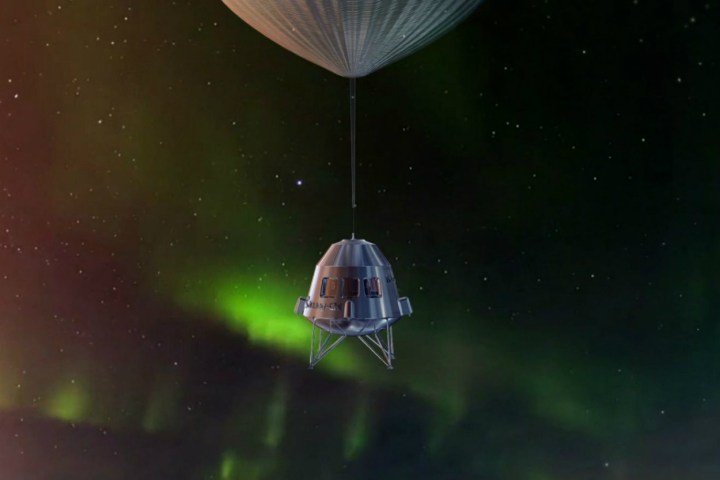
But wait, there is another company aiming for the same goal. And it’s apparently for “ordinary people.”
Shenzhen-based KuangChi Science has just unveiled plans for a futuristic $1.5-billion theme park in the southern China city of Hangzhou, and connected to the ambitious project will be a thrilling trip to “near space,” according to ArsTechnica.
Unlike the current crop of high-profile space-tourism proposals, KuangChi will offer an altogether more leisurely ride skyward, using a high-altitude balloon instead of reusable rockets and spaceships.
Truth be told, at a maximum altitude of 15 miles (24 km), it won’t quite take passengers to the edge of space, but it will take them to more than twice the height of where a jumbo jet flies, offering scenic views of the curvature of Earth as part of the experience.
KuangChi’s website depicts the planned ride in great detail, showing how the passenger-filled pressurized capsule, called the “Traveller,” will be carried toward the heavens by its enormous helium-filled balloon. The capsule, which has been in development for several years, will apparently be so comfortable that its occupants will “feel like [they’re] sitting in a limousine car.”
Once it reaches its target altitude, the Traveller capsule stays in cruise mode for up to three hours before it “descends slowly and flutters to the scheduled landing area with the support of the GPS.”
The planned theme park, meanwhile, will include, among other attractions, a ride offering a simulation of the Traveller experience, so if the tickets for the real thing are too pricey – and they will be – then a seat in a simulator will be the next best thing.
KuangChi actually has some competition for its planned service, raising the prospect of a balloon-based race to (near) space. Arizona-based World View Enterprises, for example, is continuing with the development of its high-altitude balloon, which could start next year with seats costing a hefty $75,000 each.
A launch date for the Traveller tourist service is yet to be announced.


